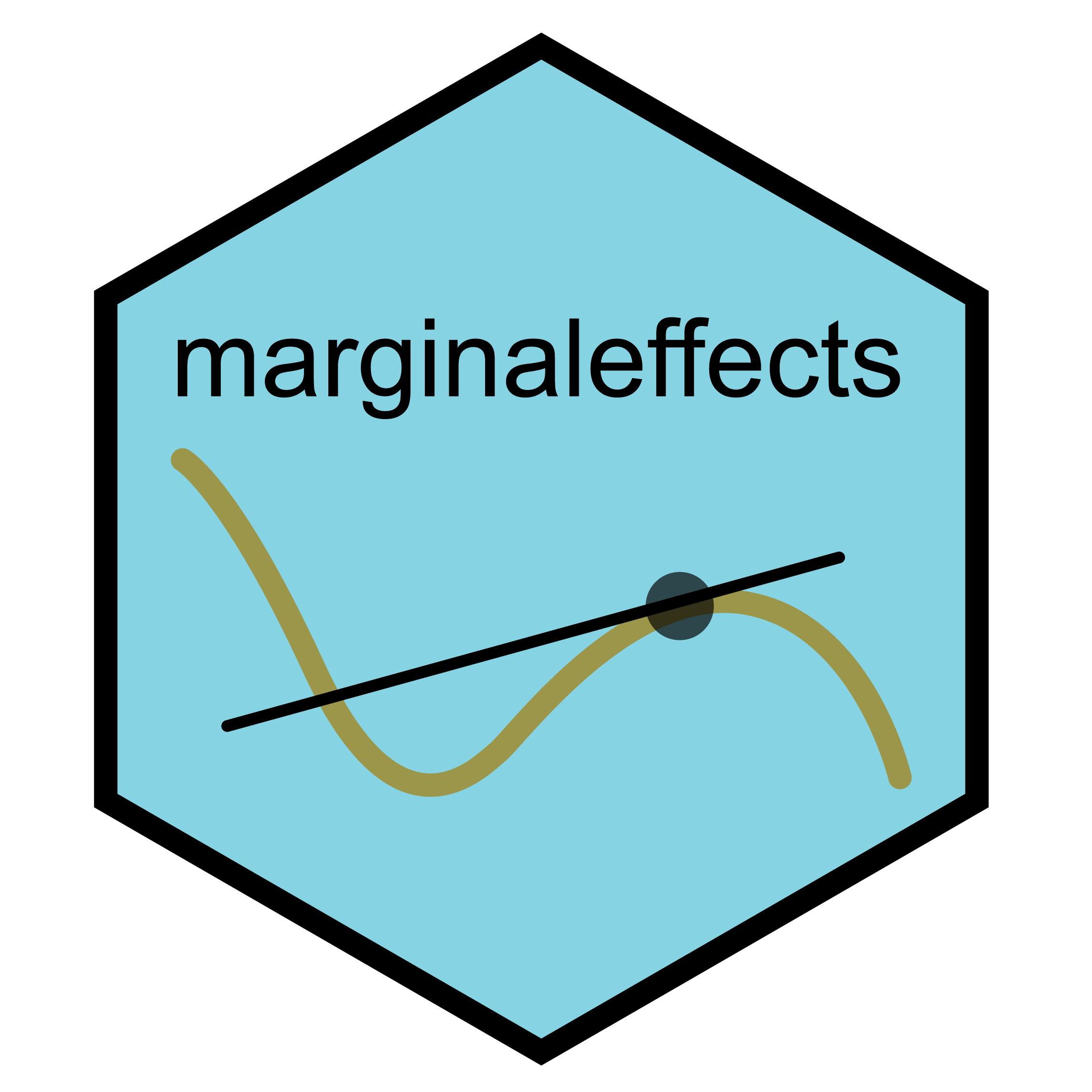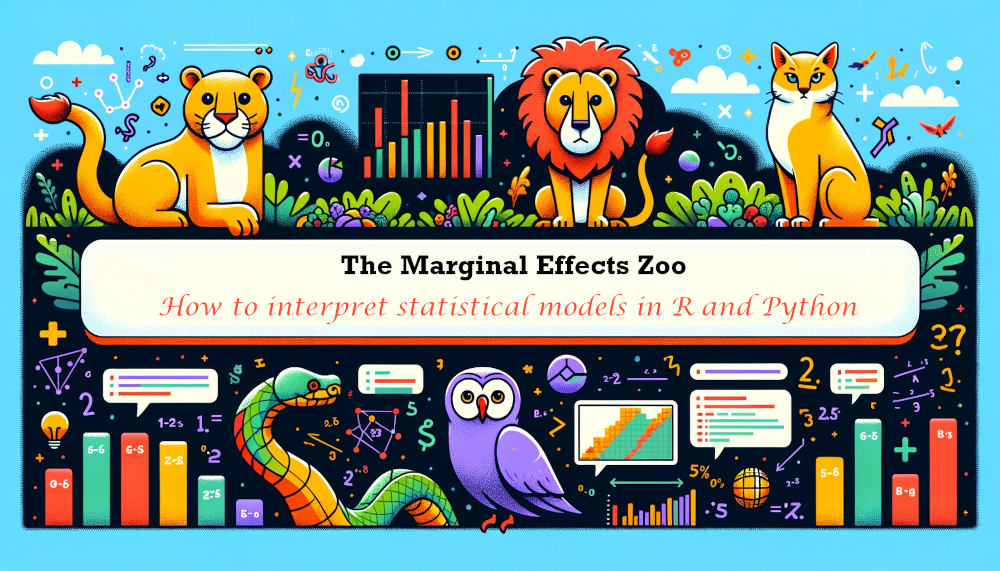

The parameters of a statistical model can sometimes be difficult to interpret substantively, especially when that model includes non-linear components, interactions, or transformations. Analysts who fit such complex models often seek to transform raw parameter estimates into quantities that are easier for domain experts and stakeholders to understand, such as predictions, contrasts, risk differences, ratios, odds, lift, slopes, and so on.
Unfortunately, computing these quantities—along with associated standard
errors—can be a tedious and error-prone task. This problem is compounded
by the fact that modeling packages in R and Python produce objects
with varied structures, which hold different information. This means
that end-users often have to write customized code to interpret the
estimates obtained by fitting Linear, GLM, GAM, Bayesian, Mixed Effects,
and other model types. This can lead to wasted effort, confusion, and
mistakes, and it can hinder the implementation of best practices.
This free online book introduces a
conceptual framework to clearly define statistical quantities of
interest, and shows how to estimate those quantities using the
marginaleffects package for R and Python. The techniques
introduced herein can enhance the interpretability of over 100 classes
of statistical and machine learning
models,
including linear, GLM, GAM, mixed-effects, bayesian, categorical
outcomes, XGBoost, and more. With a single unified interface, users can
compute and plot many estimands, including:
- Predictions (aka fitted values or adjusted predictions)
- Comparisons such as contrasts, risk differences, risk ratios, odds, etc.
- Slopes (aka marginal effects or partial derivatives)
- Marginal means
- Linear and non-linear hypothesis tests
- Equivalence tests
- Uncertainty estimates using the delta method, bootstrapping, simulation, or conformal inference.
- Much more!
The Marginal Effects Zoo book includes
over 30 chapters of tutorials, case studies, and technical notes. It
covers a wide range of topics, including how the marginaleffects
package can facilitate the analysis of:
- Experiments
- Observational data
- Causal inference with G-Computation
- Machine learning models
- Bayesian modeling
- Multilevel regression with post-stratification (MRP)
- Missing data
- Matching
- Inverse probability weighting
- Conformal prediction
The marginaleffects package for R and Python offers a single point
of entry to easily interpret the results of over 100 classes of
models,
using a simple and consistent user interface. Its benefits include:
- Powerful: It can compute and plot predictions; comparisons
(contrasts, risk ratios, etc.); slopes; and conduct hypothesis and
equivalence tests for over 100 different classes of models in
R. - Simple: All functions share a simple and unified interface.
- Documented: Each function is thoroughly documented with abundant examples. The Marginal Effects Zoo website includes 20,000+ words of vignettes and case studies.
- Efficient: Some
operations
can be up to 1000 times faster and use 30 times less memory than
with the
marginspackage. - Valid: When possible, numerical results are
checked
against alternative software like
Stataor otherRpackages. - Thin: The
Rpackage requires relatively few dependencies. - Standards-compliant:
marginaleffectsfollows “tidy” principles and returns objects that work with standard functions likesummary(),tidy(), andglance(). These objects are easy to program with and feed to other packages likeggplot2ormodelsummary. - Extensible: Adding support for new models is very easy, often requiring less than 10 lines of new code. Please submit feature requests on Github.
- Active development: Bugs are fixed promptly.
The marginaleffects package and the Marginal Effects Zoo book will
always be free. If you like this project, you can contribute in four
ways:
- Make a donation to the Native Women’s Shelter of Montreal or to Give Directly, and send me (Vincent) a quick note. You’ll make my day.
- Submit bug reports, documentation improvements, or code contributions to the Github repositories of the R version or the Python version of the package.
- Cite the
marginaleffectspackage in your work and tell your friends about it. - Create a new entry for the Meme Gallery!


